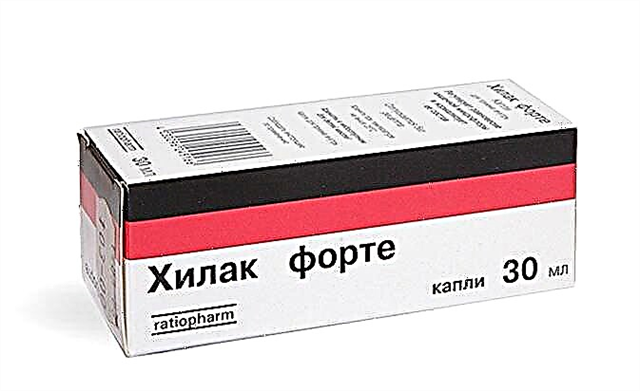
Pinosol is a herbal remedy that is often prescribed by otorhinolaryngologists for the inflammatory process in the nasopharynx. This topical remedy helps relieve a cold that is not allergic.
Adults like that such a remedy has both a vasoconstrictor and an emollient effect. But can Pinosol be used for a cold in children? What form of such a medication is best for a child and in what dosage to use?

Release form
Pinosol is available in four different forms:
- Drops... This version of the medication is a clear liquid that has a blue or greenish-blue tint. It smells of menthol, eucalyptus and is placed in a 10 ml glass bottle. The bottle has a rubber pipette with a lid. This is the most popular version of the drug, which softens the mucous membrane well, and can also be used for inhalation.
- Spray. This medication is also sold in 10 ml bottles. For the introduction of the drug on the bottle there is a special dosing pump and an adapter that allows you to easily inject the drug into the nose. The inside of the bottle contains a colorless oily solution, which may also be yellowish. This liquid is transparent and has a peculiar smell.
The main advantage of this Pinosol is ease of use, and after spraying, the solution evenly irrigates the nasal cavity from the inside.

- Ointment... This version of Pinosol looks like a white transparent mass that smells like essential oils. This nasal ointment is placed in aluminum tubes of 10 grams. The advantage of the drug is a higher concentration of active ingredients. In addition, this medication is very convenient to use before bedtime.
- Cream... This nasal product is also a fragrant, homogeneous white mass, which is sold in 10 gram tubes. The cream does not contain menthol, so it can be used by patients with intolerance to such a substance. In addition, the base of this Pinosol is non-greasy, so that after treatment with the cream, no greasy shine remains.

Composition
Pinosol is a multicomponent drug, since it contains several active substances at once. All forms of medicine contain:
- Eucalyptus oil;
- thymol (derived from thyme oil);
- alpha tocopherol acetate;
- pine oil (mountain or ordinary).

In the drops, these components are supplemented with peppermint oil and guaiazulene, which is extracted from eucalyptus oil. The fifth active substance in the spray is mint oil, and the ointment, in addition to the above substances, additionally contains levomenthol.
Among the auxiliary components of drops and ointments, you can see macrogol ether, antioxidant (butylhydroxyanisole) and apricot oil glyceride ether. In addition, the drops contain vegetable oil, and the ointment contains white wax and white petroleum jelly.

In the spray, only medium-chain triglycerides act as an additional ingredient. The active ingredients of the cream are supplemented with sepigel 305, purified water, HB septicide, vegetable oil and C1 septicide.
Operating principle
Pinosol components have a decongestant and anti-inflammatory effect. In addition, they have antiseptic and antimicrobial properties (Pinosol is effective against some streptococci, escherichia, staphylococci, candida and other microorganisms).
The use of the drug helps to make the secretion of the nasopharyngeal mucosa less viscous, eliminate swelling, reduce inflammation and prevent infection. In addition, after treatment with Pinosol, tissue healing is accelerated, which is especially valuable in a chronic inflammatory process.

Indications
All types of Pinosol are prescribed:
- with acute rhinitis;
- with chronic rhinitis in an atrophic form;
- with rhinopharyngitis;
- for any other diseases of the nasopharynx, the symptom of which is dryness of the mucous membrane;
- after surgery in the area of the nasopharynx.

From what age is it allowed to take?
Children under two years of age are not prescribed any form of Pinosol. If the child is already 2 years old, he is allowed to drip the drug in the form of nasal drops, as well as lubricate the nasal passages with cream or ointment.
Pinosol in a spray is prescribed from the age of three... Earlier use is prohibited due to the high risk of bronchospasm.

Contraindications
Pinosol should not be used in children:
- with allergic rhinitis;
- with hypersensitivity to any component of the drug.
If a cream or ointment is prescribed, it is important to prevent such forms of the drug from getting into the eyes.

Side effects
During treatment with Pinosol, local reactions may occur:
- swelling or redness of the mucous membrane;
- burning sensation;
- itching in the nose.

To avoid an allergic reaction to the medication, it is recommended to conduct a test using a smaller amount of the drug. If, after one injection, injection of drops, treatment with cream or ointment, no negative symptoms appear, Pinosol can be used further in the dosage prescribed by the doctor.
Instructions for use
Features of treatment with Pinosol depend on the chosen form of medication. Pinosol drops are used three times or four times a day. Such a remedy can be dripped directly into the nasal passages in 1-2 drops, or applied to cotton swabs and lubricated the nasal cavity.
Also this form is used for inhalation. They are made in an inhaler, but not in a nebulizer (after all, the drug contains oils), and for one procedure they take 2 ml of the drug. The manipulation is carried out 2-3 times a day, and the duration of treatment with such Pinosol is usually 5-7 days.


Pinosol in a spray is injected one press into each nostril. The frequency of use is determined by the doctor based on the severity of inflammation of the nasopharynx. The medicine can be sprinkled for 3 to 6 days.
To inject the medication, the cap is removed from the pump, then the dispenser is pressed with fingers, and then the pump is closed with a cap. Before the first use, two sprays of the medicine are required into the air. The course of treatment with this form of Pinosol usually lasts up to 10 days.

The drug in the form of a cream or ointment is applied in an amount of about 5 mm to the mucous membrane of each nasal cavity, lubricating the anterior section. To treat the nose with such medicines, you can use both a cotton swab and a cotton swab.
Then the cream or ointment has already been placed in the nasal cavity, you should lightly press on the wings of the nose, and thus grind the product inside. Processing is carried out three or four times a day.

The duration of application of the cream is usually 5-7 days, and the ointment can be used within 1-2 weeks. Longer treatment must be agreed with your doctor.
Overdose
Until now, there have been no cases of a negative effect of a large dose of Pinosol. If you accidentally drip or splash the medicine in an excessive dosage, it is recommended to monitor the child and consult a doctor if any ailments appear.
Until now, there have been no cases of a negative effect of a large dose of Pinosol. If you accidentally drip or splash overdosage of medicine, it is recommended to monitor the child and if you experience any ailments, consult a doctor.

Interaction with other drugs
The manufacturer does not mention the incompatibility of Pinosol and any other drugs. It can be used in conjunction with other treatments, such as topical antibacterial agents for a green runny nose (purulent rhinitis) or anti-inflammatory drugs for adenoids.

Terms of sale
There are no difficulties with purchasing Pinosol in drops or in another form in a pharmacy, because all options for such a medicine are over-the-counter drugs.
The average price of a spray is 220-240 rubles, for a bottle of drops you need to pay an average of 140-160 rubles, and a tube of ointment costs about 270 rubles.

Storage conditions
The shelf life of Pinosol drops is 3 years, and all other forms of medication are 2 years. Until it expires, it is advised to keep the medicines out of the reach of babies, where moisture and sunlight do not get.
Refrigeration is not necessary as the manufacturer's recommended temperature range is 15 to 25 degrees Celsius. If the date marked on the package of the medicine has passed, such Pinosol must be thrown away. It is unacceptable to use an expired remedy in the treatment of a child.

Reviews
In most reviews, mothers praise Pinosol for its mild action, good healing effect and a plant base. The advantages of the drug include several dosage forms, which allows you to choose the most suitable drug for a particular patient.
According to the parents, the treatment with Pinosol prevents lingering runny nose and eliminates dry skinwhich often occurs with rhinitis in the area of the wings of the nose and under the nose. However, as mothers note, with severe nasal congestion, this medicine is less effective than vasoconstrictor drugs.

Doctors also speak about Pinosol mostly positively. They emphasize the good action of the medicine for different types of rhinitis and praise the medicine for its moisturizing effect. However, doctors, including Dr. Komarovsky, focus on the fact that there are a lot of plant components in Pinosol, so the risk of allergy to such drugs in childhood is quite high.
To prevent dangerous complications (for example, bronchospasm), pediatricians recommend checking the sensitivity first, and then drip, lubricate or inject the product in full dose.
Tolerance to all forms of the drug is mostly good, but sometimes the drug can provoke allergies. In addition, some children do not like the smell of the medication, and the use of drops can cause a sore throat.

Some mothers call the cost of Pinosol high, but most parents consider it affordable and commensurate with the quality of the drug.
Analogs
As a replacement for Pinosol with a cold in a child, the doctor may advise:
- Eucasept. These drops contain eucalyptus, fir and peppermint oils, as well as vitamin E, thymol and azulene. The drug has anti-inflammatory and antimicrobial effects. In the treatment of children, it is used from 2 years old.
- Miramistin. This antiseptic helps to get rid of bacterial rhinitis, adenoiditis, or sinusitis. Children are allowed to bury it at any age.
- Protargol. These drops, containing silver proteinate, are also effective for purulent rhinitis and are allowed from birth.


- Cameton. Such an aerosol and spray contains camphor, eucalyptus oil, chlorobutanol and menthol, so a medicine like Pinosol helps to reduce the inflammatory process and at the same time destroy pathogenic bacteria. In the form of an aerosol, it is used from the age of 5, and in a spray - from the age of seven.
- Vibrocil. Such drops based on dimetindene and phenylephrine, in contrast to Pinosol, help not only with chronic or acute rhinitis, but also with allergic rhinitis. They can be dripped to children over 1 year old.


Review of the drug Pinosol, see below.



